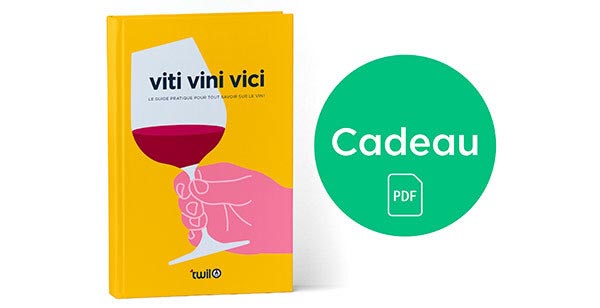You have no items in your shopping cart.
News
A little history
The winegrowing history of Beaujolais dates back to Roman times, when the first vines were planted in this fertile region. However, it was during the Middle Ages that viticulture really flourished, thanks to the influence of Benedictine monks who developed and perfected winemaking techniques. Their know-how laid the foundations for what was to become one of France's most appreciated appellations.
Over the centuries, its reputation has grown, attracting the attention of wine connoisseurs the world over. Its light, fruity red wines, made mainly from the Gamay grape, have won over the palates of even the most demanding wine lovers. The region is famous for its ten crus, including Morgon, Fleurie, Brouilly and Moulin-à-Vent, each offering unique characteristics that reflect the terroir and know-how of local winemakers.
A few emblematic dates
12th century: The seigneury of Beaujeu marked the history of Beaujolais.
17th century: Beaujolais becomes the leading supplier to Lyon's corks and taverns.
1927: The first cooperative winery opens in Beaujolais.
1951: The first Beaujolais Nouveau is marketed.
1985: A decree fixes the third Thursday in November as the date for releasing Beaujolais Nouveau for consumption.
2010: The beaujolais wine route and finally rethink embodying the backbone of the vineyard.
2018 : unesco officially designates the beaujolais as a "UNESCO Global Geopark".
Among the great men of Beaujolais is: Benoît Raclet, who invented vine scald. He discovered the remedy to get rid of the "naughty worm", the moth, an insect that devastated vines in the first half of the 19th century, especially in the Mâconnais region.
Sometimes nicknamed "the pope" or "the king" of Beaujolais. Georges Duboeuf, who came from a long line of winegrowers, settled in Romanèche-Thorins in 1964 to set up his own wine merchant business, selling Beaujolais and Mâconnais wines. A keen taster, he was keen to reveal the talent of the winegrowers and sublimate the great terroirs. He traveled the world to promote his wines alongside renowned chefs such as Guy de Savoy and Paul Bocuse.
Wines for sharing
Whatever their color, Beaujolais wines can be enjoyed both as aperitifs and at the table. They can be enjoyed at a variety of moments, always in the spirit of sharing, and seduce with their complex, crisp fruitiness.
Beaujolais de Fête, to celebrate the end of the wine year and the arrival of a new wine.
Beaujolais de Caractère, it's the perfect magnum wine to enjoy with friends around a bistro table.
Beaujolais d'Exception, a wine for laying down, to be shared with family and friends at moments of great emotion.
In recent years, Beaujolais, long considered a second-rate vineyard, has enjoyed a spectacular renaissance. The wine region is renowned for its light, fruity red wines. In recent years, many Beaujolais winegrowers and producers have undertaken to renew and modernize their production in order to revive the reputation of this wine region! It's this renaissance of the Beaujolais vineyards that is now being welcomed by wine lovers the world over.
A vineyard in full revival
Long underestimated, the Beaujolais vineyards are now enjoying an exceptional renaissance. The region's winegrowers have modernized their production, focusing on grape quality, vinification and maturation, and if there's one thing we can say for sure, it's that the difficult years are now far behind us.
As a result, Beaujolais wines produced today are of a higher quality than in years gone by, and are enjoying an unprecedented boom.
This may be due to a favorable climate, with grapes enjoying optimum ripeness to produce wines rich in flavor and aroma, while retaining the freshness and lightness typical of Beaujolais wines.
Today, Beaujolais is a vineyard in full revival, producing top-quality wines that are worthy of a place among France's finest !
The creativity of young winemakers
For a number of years now, the Beaujolais wine region has owed its renaissance to a new generation of dynamic, passionate winemakers who have breathed new life into the region! These young winemakers have understood the importance of quality and innovation in restoring the image of their native land. They don't hesitate to break old codes by adopting new winemaking techniques and creating more modern, original wines.
Thanks to their energy and creativity, these young winemakers have contributed to the emergence of a new image of Beaujolais as an innovative, dynamic and attractive winegrowing region.
Responsible approach
The Beaujolais winegrowing region is also aware of the importance of protecting the environment, and is resolutely committed to a responsible approach to viticulture. More and more winegrowers are adopting environmentally-friendly practices, such as organic farming, agroecology and agroforestry. Some vineyards have even been awarded the "Haute Valeur Environnementale" (HVE) label, which rewards farms committed to environmentally-friendly practices.
This commitment to sustainable development helps preserve the quality of soil, air and water, while improving the quality of the grapes and wines produced, thus testifying to the region's commitment to environmental protection.
Discover the wines of Beaujolais on Twil !
What is a terroir ?
A wine-growing terroir is a group of plots of land in the same wine-growing region, sharing the same climatic conditions, soil type and production techniques, all of which contribute to the specificity of the wine produced and marketed.
The region is divided into two main wine-growing zones: Haut-Beaujolais to the north, where vines flourish at higher altitudes, and Bas-Beaujolais to the south, where the climate is slightly milder. Each sub-region makes its own contribution to the richness and diversity of Beaujolais wines.
The Beaujolais region
The Beaujolais region encompasses a variety of terroirs, each with its own appellation. This emblematic region in the Rhône department is renowned for its characterful wines and unique terroir. Between the city of Lyon and Burgundy, Beaujolais offers a picturesque landscape of rolling green hills dotted with vineyards, where winegrowing tradition blends with generous nature.
Beaujolais is famous for its Crus, which represent the pinnacle of quality in the region. Each Cru has its own identity, influenced by the soil, microclimate and specific viticultural practices of the area.
Among the most renowned Crus are :
Moulin-à-Vent: Renowned for its robust, full-bodied wines, this Cru is often compared to Burgundy wines for its ability to age.
Fleurie: Known for its delicacy and floral bouquet, Fleurie produces feminine, elegant wines, perfect for accompanying refined cuisine.
Morgon: Appreciated for its structure and depth, Morgon offers wines rich in black fruit aromas and great ageing potential.
Each Cru offers a unique taste experience, reflecting the subtleties of the terroir and the expertise of local winemakers.
Passionate winemakers
Many winemakers adopt environmentally friendly practices, favoring organic and biodynamic cultivation to preserve the richness of their terroirs.
In addition, the region explores new winemaking techniques while preserving the traditional methods that make the reputation of its wines. Beaujolais winemakers seek to best express the quintessence of their terroir, using methods such as carbonic maceration to reveal the freshness and vivacity of the grapes.
The qualities and variety of its wines, the Beaujolais region owes it to the diversity of its terroirs as well as the passion of its winemakers, a unique know-how that will delight your taste buds!
Wines with surprising profiles, vins pourpres represent the emblem of a new expression of Bordeaux wines. These cuvées combine classic revisits with unpredictable flavors. Surprise guaranteed!
Which grape varieties for these atypical wines ?
Produced from preserved Bordeaux terroirs, these cuvées are the fruit of a selection of older grape varieties (including Malbec, Carménère and Petit Verdot) and single-varietal cuvées from old vines.
Tasting notes
To be enjoyed young and chilled, around 17°.
These wines offer an original, supple taste profile, with highly expressive fruit aromas, peppery notes and smooth tannins. A truly new taste experience!
Food & Wine Pairing
Unexpected flavors for a red wine that's perfectly suited to new consumer trends: vegan, flexitarian, vegetarian.
And for gourmets, it's perfect with white meats in sauce.
Ruby-coloured wines are characterised by their freshness and fruitiness, making them an easy pairing. It's the perfect bottle to have at home for any special occasion!
Production of ruby wines
Harvested early, the grapes are matured for a short period in barrels or stainless steel vats. When blending, it is the expression of the fruit that governs. Through these wines, the estates, co-operatives and trading houses commit to a consistent quality of production, vintage after vintage.
Tasting moment
Real ready-to-drink wines, you can enjoy them very young (up to 3 years) to keep their freshness on the palate. Fruity, ruby-red wines offer a nose of wild berries and a well-structured yet light palate.
Wine and Food Pairing
A pleasurable wine that will stand on its own as an aperitif with friends.
Afterwork or barbecue, these wines are perfect for any impromptu moment.
Garnet cuvées embody an emblematic identity of red wine, and are often in the majority in production. Timeless, they convey both notions of tradition and renewal. Structured wines, they offer a pleasant concentration of aromas and the promise of balance.
The origin
Garnet wines have been part of Bordeaux wine history for 2,000 years, and are the region's must-have cuvée. Made from a blend of Bordeaux's most renowned grape varieties, it is mainly the oldest vintages that display this hue. This is because, during bottle ageing, the pigments (anthocyanins) precipitate out, giving the wine a beautiful garnet hue.
Which grape varieties?
These cuvées are made from a blend of the best-known Bordeaux grape varieties (Cabernet Franc, Cabernet, Sauvignon, Merlot). They may also be made from the same grape variety. The vintage also influences the profile of these cuvées.
A tasting date?
Garnet wines can be enjoyed fairly young, and can be kept for 5 to 10 years! Indeed, these cuvées develop over time, and so do their aromas.
Food and wine pairing
Whether it's a hamburger with a good red meat or a more elaborate bistronomic dish, these cuvées go well with many dishes.
Our watchwords: simplicity and refinement!
The carmine cuvées are truly iconic signatures that preserve the tradition of the Crus Classées of Bordeaux. Exceptional wines from both the négociant and estate houses, it is essential that you taste them at least once in your life...
Excellent expertise
These "haute couture" wines are made using advanced and innovative techniques. And they are always made with quality in mind, with tailor-made choices at every stage: micro-parcel selections, manual harvesting, maturing for several months in French oak barrels.
What's more, these wines bear witness to the excellence of Bordeaux's terroirs and expertise!
Let's get on with the tasting!
The bottle: it would be a shame not to take a closer look! Very often, the labels mention the exceptional nature of the wine: grand cru classé, cuvée prestige, grande cuvée, etc.
These wines are a powerful red, with a deep, dense colour. On the palate, they offer finesse, length and aromatic richness. Alongside notes of ripe black fruit, there are subtle hints of toast and even vanilla.
Food & Wine Pairing
Go for meat dishes.
Because of their great ageing capacity, it would be wiser to save them for special occasions. But it's up to you to decide when that is!
Never miss a drop. To keep up to date with news from our winemakers and the Twil team, follow us on social media















 TWIL - Achat de Vin
TWIL - Achat de Vin


